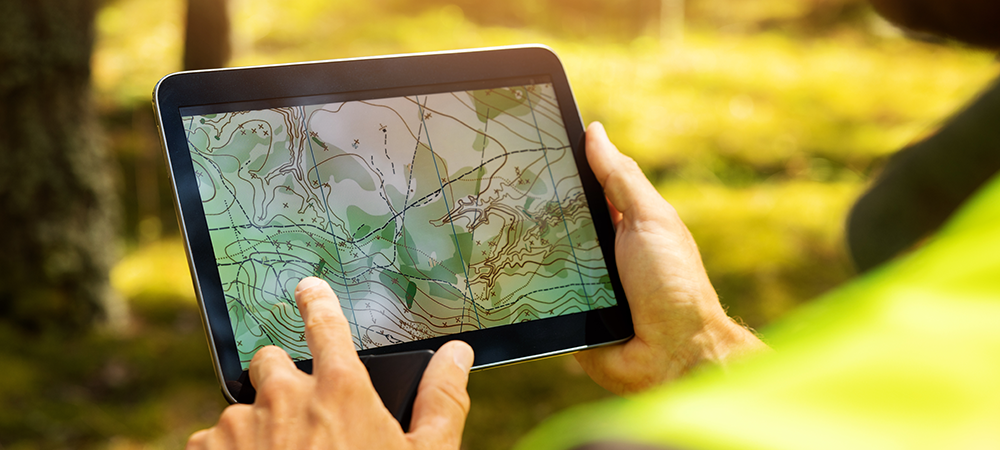Every day, land surveyors grapple with intricate tasks, but what about the lands either too expansive or too minuscule, or those submerged underwater? We explore the transformative technologies that have revolutionised the surveying sector, making even the most challenging terrains not just workable, but conquerable.
Underwater surveying, mapping and inspection
Earlier this year, Auriga Software, specialising in capital planning and construction management software for infrastructure and private owners, partnered with the University of Florida’s Department of Mechanical and Aerospace Engineering to develop a revolutionary system for underwater surveying, mapping and inspection – provisionally named Bathydrone.
The current process to gather data for new underwater construction or the inspection of existing assets such as bridges, docks and levees consists of manual surveying from divers or survey sensors mounted to a boat.
With the new, safer and more efficient Bathydrone system, a drone drags a small vessel on the water’s surface – eliminating the need for manual surveying.
The vessel is equipped with a COTS sonar unit mounted on its bottom. The sonar unit has down-scan, side-scan and chirp capabilities and logs data onboard the console, which is located inside the hull.
Data can then be retrieved post-mission from the console and plotted in various ways.
“We are excited to be working on this groundbreaking technology with the team at the University of Florida,” said Balaji Sreenivasan, CEO and Founder of Aurigo Software. “The Bathydrone system will vastly expand the possibilities for underwater endeavors while providing a cheaper, safer and more eco-friendly alternative for our customers.”
Not only is data collected more easily, but the technology can also be operated remotely and autonomously using AI navigation software to overcome obstacles in or underwater – creating a faster and cheaper solution.
The system will also integrate with Aurigo’s Masterworks Cloud Platform to properly store and categorise project data and route any inspections or other results for approval or further action.
Additional Bathydrone differentiators include:
- Fully battery-operated and better for the environment-no fuel or loud noise
- Lightweight and easily transportable
- Does not require a dock or boat ramp to get in the water
- Able to be deployed in a wide variety of water systems, including shallow water and rivers with strong currents
- Able to survey a large area on a single charge
“This project supports our department’s mission to conduct state-of-the-art research to advance science and technology,” said Peter Ijfu, University of Florida’s Mechanical and Aerospace Engineering Excellence Term Professor and Associate Chair of Faculty Affairs.
“This pioneering approach to underwater surveying and mapping has multiple real-world applications that are not currently commercially available.”
Use of drones
According to a report, titled: ‘Drone Training and Education Services Market’ the construction segment is projected to hold the highest CAGR of 37.9% from 2023 to 2032, owing to increased prominence of drones in construction for their capacity to collect data, monitor sites, and enhance operational efficiency. North America accounted for more than one-third of the drone training and education services market revenue, as the report saw a surge in adoption of drones across various industries, including construction and surveying.
Drones do not only support challenges expansive areas, but confined ones too. Team UAV, a UK-based surveying company utilising drone inspection, states on their website: “Team UAV relies on the Elios 3 drone, a cutting-edge technology developed by Flyability, to deliver exceptional inspection services. With its advanced features, the Elios 3 takes confined space surveys to new heights. It helps Team UAV capture precise measurements and create detailed 3D representations of confined spaces, enabling them to identify potential issues more accurately.”
Expansive road surveying: Automotive navigation maps (ADAS)
Genesys has set new standards in navigation and safety technology, driving progress in the automotive industry. This innovation represents a significant stride towards the future of driver safety and advanced ADAS levels, including autonomous driving – demonstrating Genesys’ commitment to enhancing safety and support for autonomous vehicles with highly detailed road information.
The highlight of Genesys’ showcase was their high fidelity 2D Standard Definition (SD) map for India, which covers 8.3 million km of roads and features over 40 million Points of Interest, setting a benchmark in accuracy and reliability. Advancing beyond the basics, Genesys introduced its innovative ADAS maps, addressing critical challenges in visibility, localisation, and lane guidance faced by vision-based ADAS systems.
Genesys International’s commitment to innovation is reinforced through their recent projects and partnerships, including creating 3D digital twins of urban areas and a landmark partnership with the Survey of India (SOI), India’s principal mapping and surveying agency. This collaboration marks a transformative step in enhancing India’s geospatial data capabilities, leveraging Genesys’ advanced mapping technologies and SOI’s extensive surveying resources.
Navin Paul, a key member of Genesys’ Executive Innovation Board and advisor to the Ministry of Road Transport and Highways (MoRTH), Government of India, explained, “For road safety to improve, all parts of the ecosystem, such as the vehicular tech, road designing, road construction standards and accurate maps, must interface and interact. Genesys’ ADAS map brings in an essential component of the ecosystem. The maps help augment the driver’s cognitive ability to understand and assess the risks better. It will help to create a faster and more agile response to prevent accidents.”




